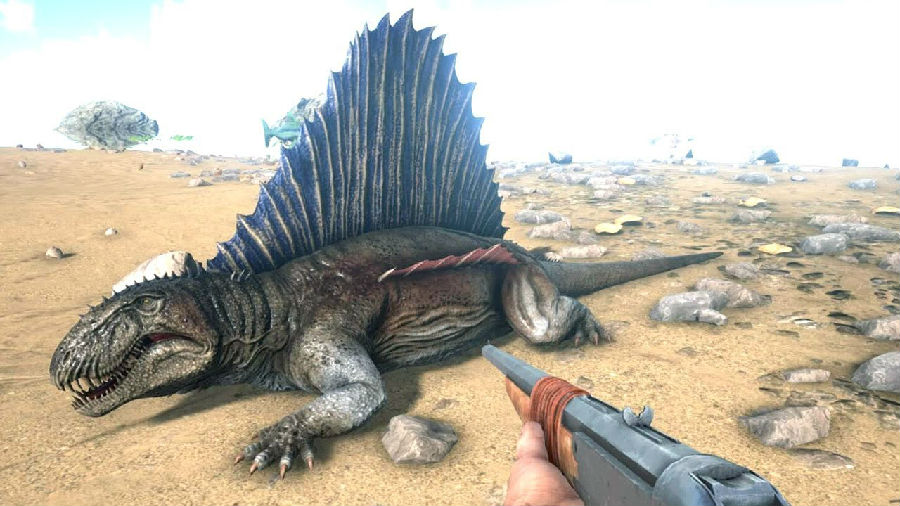But come we did, though reaching our present state of eminence has not of course always been straightforward. Since life on land began, it has consisted of four megadynasties, as they are sometimes called. The first consisted of primitive, plodding but sometimes fairly hefty amphibians and reptiles. The best-known animal of this age was the Dimetrodon, a sail-backed creature that is commonly confused with dinosaurs (including, I note, in a picture caption in the Carl Sagan book Comet). The Dimetrodon was in fact a synapsid. So, once upon a time, were we. Synapsids were one of the four main divisions of early reptilian life, the others being anapsids, euryapsids, and diapsids. The names simply refer to the number and location of small holes to be found in the sides of their owners' skulls. Synapsids had one hole in their lower temples; diapsids had two; euryapsids had a single hole higher up.

Over time, each of these principal groupings split into further subdivisions, of which some prospered and some faltered. Anapsids gave rise to the turtles, which for a time, perhaps a touch improbably, appeared poised to predominate as the planet's most advanced and deadly species, before an evolutionary lurch let them settle for durability rather than dominance. The synapsids divided into four streams, only one of which survived beyond the Permian. Happily, that was the stream we belonged to, and it evolved into a family of protomammals known as therapsids. These formed Megadynasty 2.












